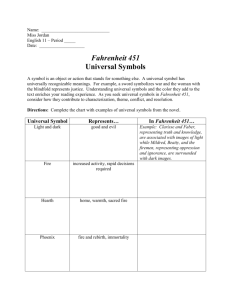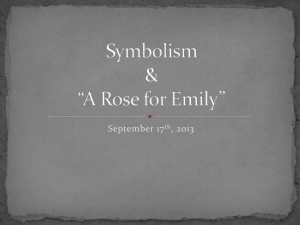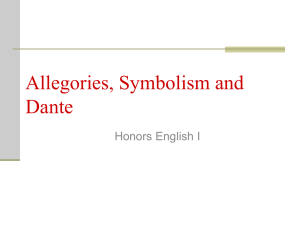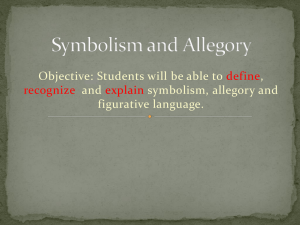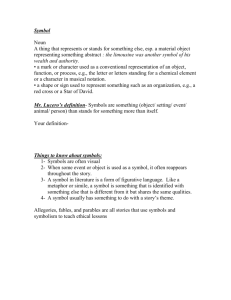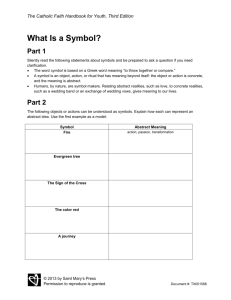Symbolism and Allegory
advertisement
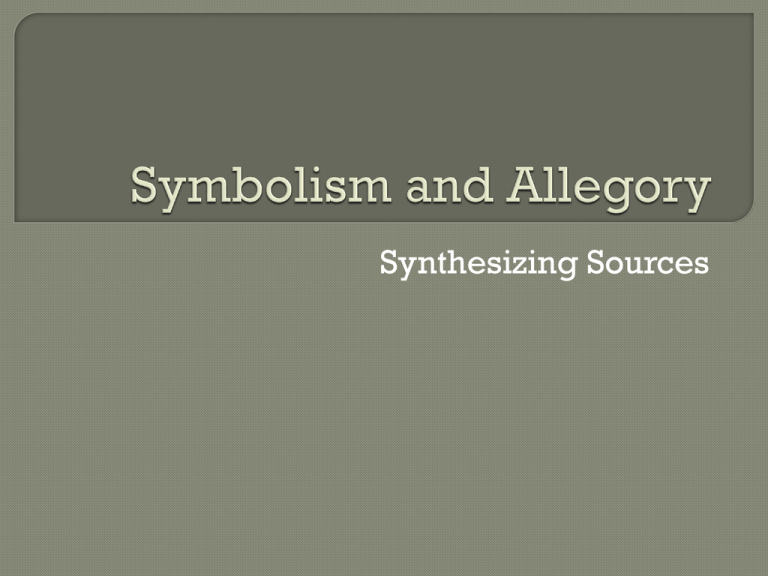
Synthesizing Sources A symbol is often an ordinary object, event, person, or animal to which we have attached extraordinary meaning and significance. For example, we use a rectangle piece of dyed cloth to symbolize a country. We use a picture of a skull and crossbones to represent poison or danger. We send red roses as a symbol for love. Symbols can be inherited. The most familiar symbols have been inherited—meaning they’ve been handed down over time. For example, no one knows who first associated the lion with pride and courage, but once those qualities were associated with the animal, the lion became a public symbol, one that shows up on flags, coats of arms, castle walls, etc… Symbols can be invented. You probably have a symbol that represents your school. Writers often take a new object, character, or event and make it the symbol of some human concern. Some invented symbols in literature have become well-known public symbols such as Peter Pan, who symbolizes eternal childhood. Why don’t writers just come right out and say what they mean? Symbols allow writers to suggest layers and layers of meaning—possibilities that a simple, literal statement could never convey. A symbol is like a pebble cast into water: It sends out ever-widening ripples of meaning. An allegory is a story in which characters, settings, and actions stand for something beyond themselves. Sometimes the characters and settings represent abstract ideas and moral qualities. Sometimes the characters and situations stand for historical figures and events. An allegory can be read on two levels. Allegories can be read on a literal, straightforward meaning or for its symbolic or allegoric meaning. Allegories are often intended to teach a moral lesson or to make a comment about goodness and vice. A. 1. 2. 3. 4. 5. Think about the number of symbols we’re surrounded by in everyday life. For starters, identify what the items below stand for. Then, see if you can explain the basis for the symbol—why is this symbol appropriate for what it stands for? A snake An eagle Spring An owl A white flag B. Here is a brief poem that works on two levels: a literal level and a symbolic level. A “fen” is a swampy place. What does the fen symbolize in this poem? I May, I Might, I Must If you will tell me why the fen appears impassable, I then will tell you why I think that I can get across it if I try. --Marianne Moore Think of another piece of literature, a movie, or a song that includes a distinctive symbol. Explain the ideas associated with that symbol. Pride is an overriding them in “The Scarlet Ibis” by James Hurst. Generate a list of situations that might make someone feel proud. Is pride positive or negative—can it be both? Jot down your thoughts about what it means to be proud. sullenly Imminent Iridescent Serene Infallibility Blighted Doggedness Reiterated Precariously mar As you read “The Scarlet Ibis,” keep track of the little things—color, gesture, weather—and see what larger meanings they might point to.

